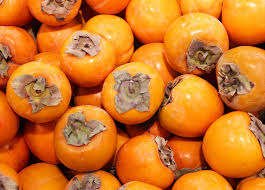Growing persimmons from seed is an enjoyable and rewarding experience, especially when you can enjoy the fruits of your labor right from your own container garden. This guide provides a step-by-step process to help you successfully grow persimmons in pots, ensuring a fruitful outcome.
1. Choosing the Right Persimmon Variety
When growing persimmons in pots, it’s important to choose a variety that thrives in container environments. Dwarf or semi-dwarf varieties like Fuyu and Jiro are excellent options. These types are compact, self-pollinating, and can be grown successfully in smaller spaces, making them ideal for pot cultivation.
2. Preparing the Ideal Pot
Selecting the right pot is crucial for the healthy growth of your persimmon tree. Choose a container that is at least 22-24 inches deep and wide to accommodate the persimmon’s long taproot. The pot should have proper drainage holes to prevent water from accumulating, as excess moisture can cause root rot. Materials such as ceramic, plastic, or wood work well for pots, as they offer durability and effective moisture retention.
3. Soil Composition
The quality of soil plays a key role in the health of your persimmon tree. Create a well-draining potting mix by combining potting soil, organic compost, and a drainage aid like perlite or sand. This mixture allows for proper root development and prevents the soil from becoming too compact, which could restrict airflow to the roots.
4. Seed Germination Process
Seed Selection and Preparation
Start with fully ripe persimmons, which you can easily find in the market. Extract the seeds and clean them thoroughly to remove any fruit residue.
Moist Paper Towel Method
Place the cleaned seeds in warm water for 24 hours. After soaking, place the seeds on a moist paper towel and fold it over them. This moist environment encourages the seeds to sprout.
Creating the Right Environment
Seal the paper towel and seeds in a zippered plastic bag or airtight container. This helps maintain humidity, which is essential for germination. Store the bag in the refrigerator for about 3 months. This cold stratification mimics the winter period that seeds would naturally undergo outdoors.

Planting the Seeds
Once stratification is complete, plant the seeds in a tall container filled with sterile potting soil. Plant the seeds about 2 inches deep. Keep the container in a bright, warm area with temperatures between 70-80°F (21-27°C).
5. Ongoing Care for Your Persimmon Tree
- Watering: Ensure the soil is kept moist but not waterlogged. Water deeply, allowing the soil to dry out slightly between waterings.
- Fertilizing: During the growing season, feed your tree with a balanced, slow-release fertilizer to support healthy growth.
- Pruning: Trim your tree to maintain its shape and remove any dead or unhealthy branches.
- Sunlight: Persimmons thrive in bright, direct sunlight. Aim for 6-8 hours of sunlight daily to encourage strong growth and fruit production.
6. Special Tips for Success
- Repotting: Every 2-3 years, repot your persimmon tree into a larger container with fresh soil. This will provide more room for the roots to grow and prevent nutrient depletion.
- Cross-Pollination: Although persimmons are self-pollinating, planting multiple varieties can help increase fruit yield and quality.
- Winter Care: If you’re in a colder climate, bring your persimmon tree indoors or place it in an unheated room during winter months to protect it from frost.
Conclusion
By following these simple guidelines, you can successfully grow persimmons from seed in a container. While it may take a few years for your tree to bear fruit, the process is well worth the wait. With patience and care, you’ll soon be enjoying your own homegrown persimmons—sweet, delicious, and full of flavor.
